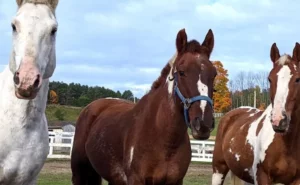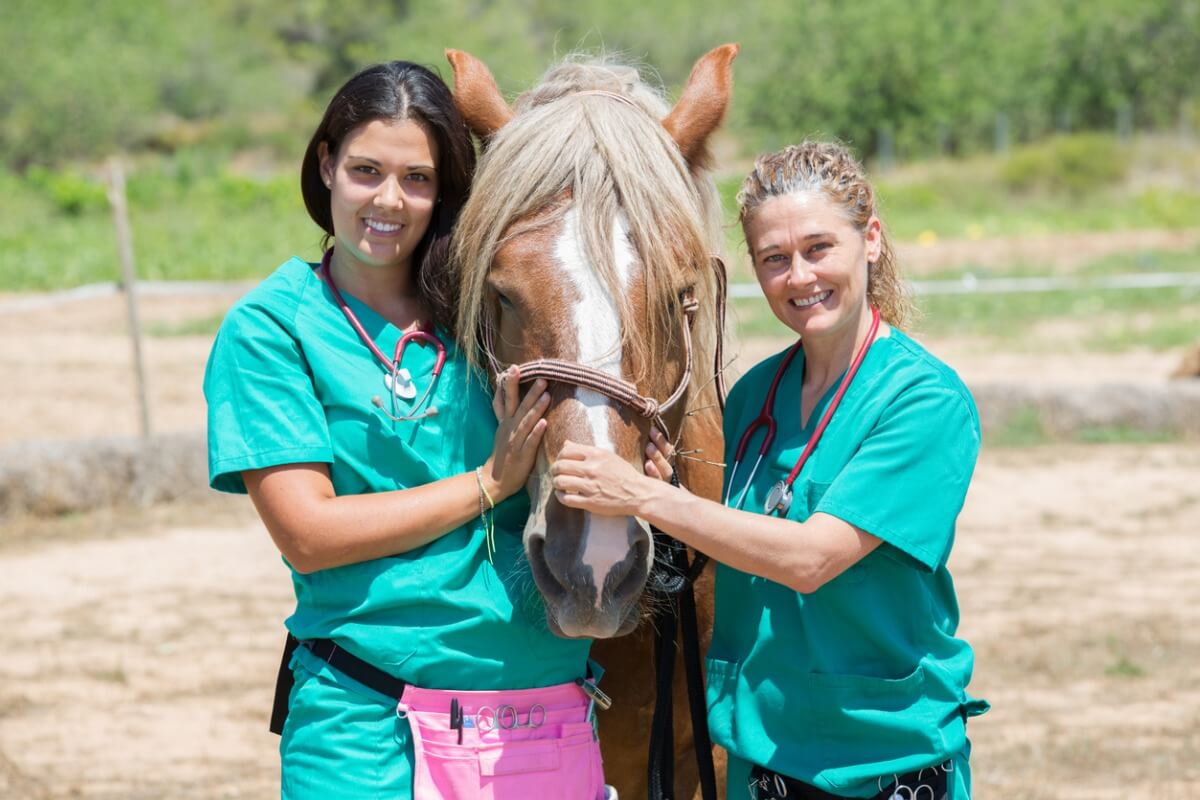Doping in Competition Horses


Written and verified by the vet Érica Terrón González
Doping in horses was first mentioned in an English dictionary in 1889. Today it’s taken to mean the use of prohibited substances that can influence their performance, both for good and for bad. And this includes many of the veterinary treatments commonly used in equine care. Find out about doping in competition horses in this article.
We’re all aware of the existence of intentional doping, but what about unintentional doping? In the last few decades, there have been several cases of doping as a result of oversights or lack of information. That is why it’s so important that the person in charge of competition animals acquires sufficient knowledge about it.
Doping in horses: a historical practice
Doping in sports and show animals has existed since ancient times. Several examples are recounted in Greek mythology:
- Diomedes, son of Ares, fed his horses with human flesh to make them wild and invincible.
- Philostratus (in the 3rd century BC) said that the participants in the Olympics used potions to improve their athletic capacity.
- Morgan, C.E., 1958, states that, in ancient Rome, mead was given to horses to improve their performance.
- In the 18th century, in England, horses that competed were given alcoholic beverages to spur them on.
Why is it so important to combat doping in competition horses?
The practice of doping violates all the principles of sporting ethics. In addition, it worsens the health of the animals in question, because they have to endure the effect of harmful substances. Not to mention that it’s often practiced by non-professionals, without knowledge or respect for rules.
Doping in competition horses can even affect breeding and selection programs. Imagine a breeding selection plan based on the results obtained in a competition that’s been fixed. Such a plan would be doomed to failure because the performance achieved wouldn’t be attributable to the horse and horses of mediocre quality would be used as breeding stock.
What substances are prohibited in competition horses?
According to current regulations, any substance that affects the following systems in the horse’s body is prohibited:
- The nervous, cardiovascular, endocrine, and immune systems, with the exception of mandatory vaccinations.
- Respiratory, digestive, urinary, reproductive, and locomotor systems.
- Anti-infectious, antipyretic, analgesic, anti-inflammatory, and cytotoxic substances.
Medication to win races
This type of medication is usually applied by the person responsible for the horse, for their own benefit. This is the case with short-term stimulants, such as amphetamines, cocaine, or narcotics, as well as anabolic agents applied repeatedly. Another example is the administration of small doses of tranquilizers in fearful horses.
Medication to harm performance
In this case, the medications are administered by people outside of the animal. Here we can cite the use of tranquilizers in high doses, sedatives, or depressants, with the purpose of harming its chances in the race.
Medication to restore or recover their performance
Here we’re referring to the use of anti-inflammatory drugs, both steroidal and non-steroidal. Although it’s true that in certain countries their use is permitted, it’s always subject to veterinary control. The same applies to fluid and electrolyte therapies. The opposite is true for local anesthetics, whose use is always prohibited.
Other doping trends in horses
For example, the administration of certain substances to mask the detection of illegal medication, or drugs that increase diuresis and thus decrease the relative concentration of drugs in the body. But there are also autotransfusions, fasting to hinder performance, or the use of erythropoietin.
Endnote

Doping control has always been considered a difficult task. The reason is twofold:
- On the one hand, the technical difficulties of diagnostic tests must be taken into account.
- On the other hand, the variety of criteria that exist in the different countries of the world.
Many substances commonly used in equine medicine are capable of altering the performance of horses intended for sport. Therefore, the possibility of detecting any of them in the organic fluids of horses is complicated. Not to mention that each agent is administered at a specific dose and metabolized by a different route.
Thus, talking about control in the use of medication is complicated and has a high probability of becoming doping.
All cited sources were thoroughly reviewed by our team to ensure their quality, reliability, currency, and validity. The bibliography of this article was considered reliable and of academic or scientific accuracy.
- Rodríguez M, Fragio C, Juttner C, González M. El dopaje-dopping en caballos de competición [Internet]. Madrid; 2004 [consultado el 23 de junio de 2020]. Disponible en: http://www.produccion-animal.com.ar/produccion_equinos/produccion_equina_en_general/37-el_dopaje.pdf
- Bolger C. Lo que debes saber sobre las pruebas de dopaje [Internet]. Horse1 – Centro de Nutrición Equina. 2001 [consultado el 23 de junio de 2020]. Disponible en: https://www.horse1.es/es/35-publicaciones/nutricion/73-lo-que-debes-saber-sobre-las-pruebas-de-doping
- Deulofeu García M, Jiménez Chacón J. Juego limpio y juego sucio: Dopaje en el mundo del caballo [Internet]. 2014 [consultado el 23 de junio de 2020]. Disponible en: https://ddd.uab.cat/pub/estudis/2013/115071/juelim.pdf
This text is provided for informational purposes only and does not replace consultation with a professional. If in doubt, consult your specialist.